Accelerating Scientific Discovery Through Computation and Visualization
- PMID: 27551642
- PMCID: PMC4877149
- DOI: 10.6028/jres.105.068
Accelerating Scientific Discovery Through Computation and Visualization
Abstract
The rate of scientific discovery can be accelerated through computation and visualization. This acceleration results from the synergy of expertise, computing tools, and hardware for enabling high-performance computation, information science, and visualization that is provided by a team of computation and visualization scientists collaborating in a peer-to-peer effort with the research scientists. In the context of this discussion, high performance refers to capabilities beyond the current state of the art in desktop computing. To be effective in this arena, a team comprising a critical mass of talent, parallel computing techniques, visualization algorithms, advanced visualization hardware, and a recurring investment is required to stay beyond the desktop capabilities. This article describes, through examples, how the Scientific Applications and Visualization Group (SAVG) at NIST has utilized high performance parallel computing and visualization to accelerate condensate modeling, (2) fluid flow in porous materials and in other complex geometries, (3) flows in suspensions, (4) x-ray absorption, (5) dielectric breakdown modeling, and (6) dendritic growth in alloys.
Keywords: IMPI; MPI; discovery science; distributed processing; immersive environments; interoperable MPI; message passing interface; parallel processing; scientific visualization.
Figures

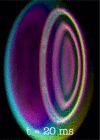


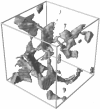



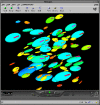






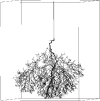


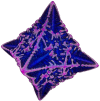
References
-
- Griffin TJ. NIST Scientific Applications and Visualization Group (online) Available from: < http://math.nist.gov/mcsd/savg>, Accessed 20 Nov. 2000.
-
- van Dam Andries, Forsberg Andrew, Laidlaw David, LaViola Joseph, Simpson Rosemary. Immersive VR for Scientific Visualization: A progress report. IEEE Comput Graph Appl. 2000:26–52.
-
- Message Passing Interface Forum MPI: A message-passing interface standard. Int J Supercomput Appl. 1994;8(3/4):159–416.
-
- Message Passing Interface Forum MPI-2: A message-passing interface standard. Int J Supercomput Appl High Perform Comput. 1998;12(1–2):1–299.
-
- Message Passing Interface Forum, MPI -2 (online) Available from: < http://www.mpi-forum.org/>, Accessed 20 Dec. 2000.
LinkOut - more resources
Full Text Sources
Other Literature Sources
